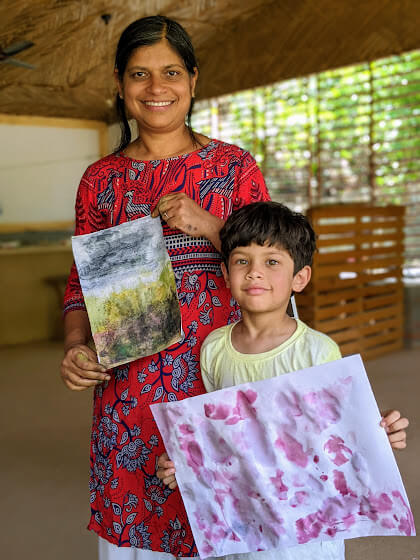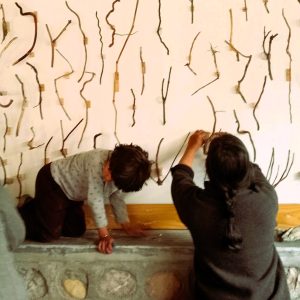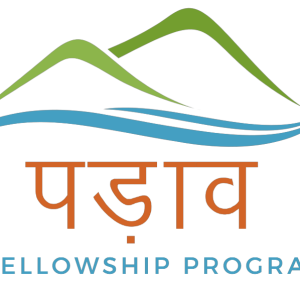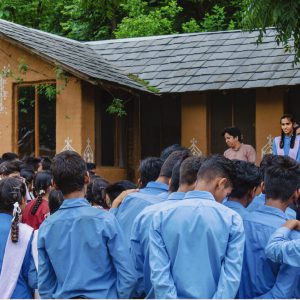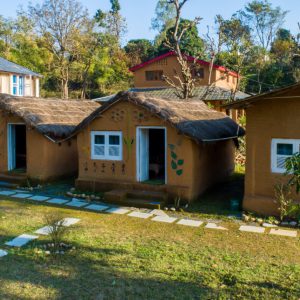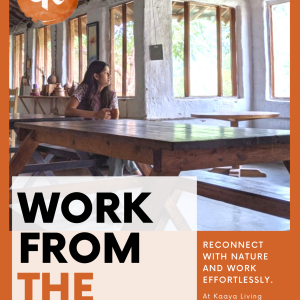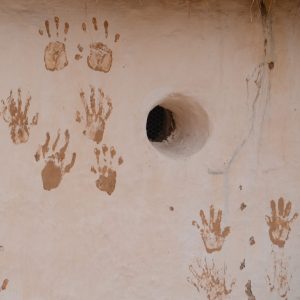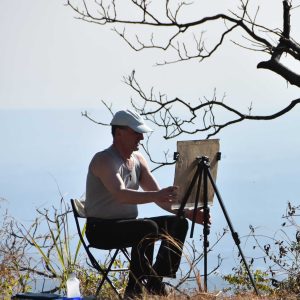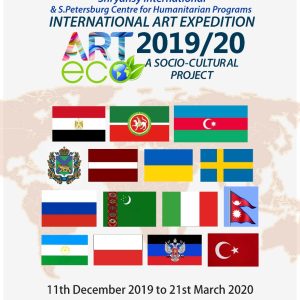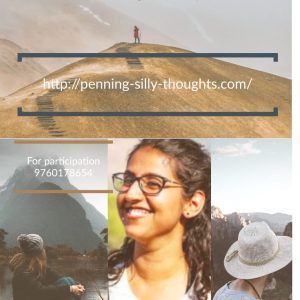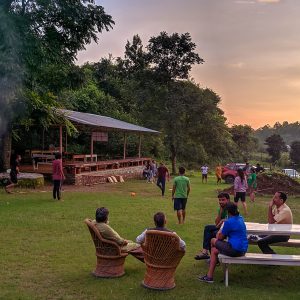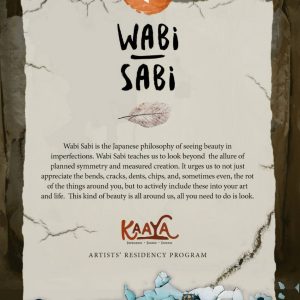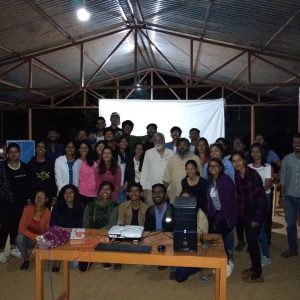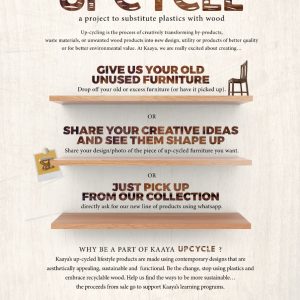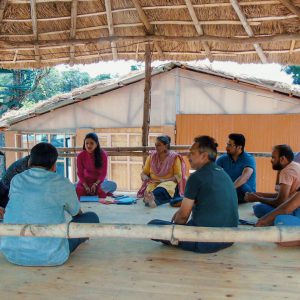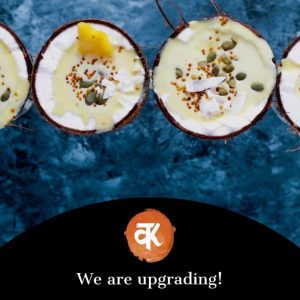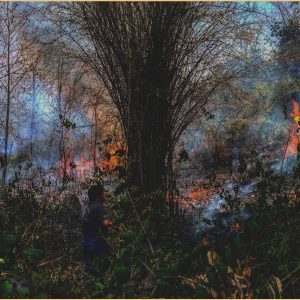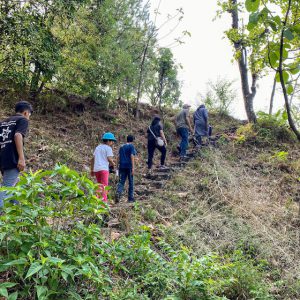Letting nature be their teacher
The natural setting of a village provides an ideal ground for fun, learning, and exploration. Surrounded by forests, hills, water bodies, and rural life, time spent at Kaaya means adventures, physical challenges, hosts of smell and taste, visual delights, orchestras of sound that fills the mind with awe, wonder, a deep sense of excitement, in some cases, fear, and at other times joy and delight.
As a facilitator, we value unstructured time spent by students at Kaaya. Often, we let hyper active students feel bored at times too, because we believe such moments helps them re-discover their imagination and creativity naturally.
A journey from Classrooms to Real World
In class rooms, students engage with different aspects of pressing global issues related to environment, climate change or sustainability covered in their syllabus. When they visit Kaaya, they have already studied, debated, presented on, and written research papers about them. At Kaaya, they get the field context to link them all together as they undertake different journeys specially developed by Kaaya facilitators. Each journey is designed to have elements of cognition, tactile/visual as well as practice component to provide a holistic understanding.
A connect with their roots
In a world of super markets, online shopping, and smart phones, the disconnect between urban and rural realities only keep widening. At Kaaya, we believe that bridging this gap can go a long way in tapping into the energies, creativity, and possibilities of building sustainable, modern communities. We facilitate a proactive engagement of students with local environment where nature and communities co-exist; and how such interactions are the basis of supporting urban lifestyles. Students also learn how they, as a consumer, can contribute towards building a more eco-friendly, sustainable world
Applying mind to find ‘Solutions’
In this information age problems do seem bigger. At Kaaya, our semi-structured programming allows participants to engage in a hands-on manner to have experiential learning of sustainable solutions. The emphasis is on building upon existing resources/assets that the individual/community has within their own control and how an outsider can help make it better. Students are encouraged to use ‘appreciative enquiry’ as a methodology, it helps students to identify mutual areas of strength where they can contribute even with their limited tools or resources. Our facilitators help them engage with local community or issue in a way where they feel they can make a difference.
Space to co-create and be the change
Kaaya Maker’s space fosters a spirit of ‘creation’ at times where we are more used to ‘consumption’. At Kaaya, we facilitate the process of co-creation; wherein, the individual finds ways to ‘do’ something about the larger issues confronting them. For example, making and using ‘seed bombs’ by students for reforestation in a way gives them back a sense of control. When they fight for global warming, they know they can always have ‘seed bombs’ to throw. With the use of Maker’s space, we transfer basic skills to up-cycle and re-use waste products, and show students, how to make new ones that leave minimum carbon footprints.
Gain direct insights from the ground
Our modules are designed in such a way that facilitate holistic learning. Students interact with real life ‘practitioners’ who know their work because their livelihood depends on it. For example our resource person for the milk journey knows what & how much a cow eats; what does it costs; how much milk she gives; what rate he gets for his milk; how purity of his milk is determined, how government is helping etc because he himself owns the dairy unit. This allows students to fully engage with him to get an insightful sense of ‘milk’ they are a consumer of.
Learning Outcomes:
- Deep Learning of inter-connect between man & its environment
- Appreciation of traditional wisdom, commitment and persistence of farming community that is growing food for us
- Understanding the building blocks of a sustainable community and to see scientific and technical innovations from ecological perspective
- Exposure to architecture, forestry, nature’s art & craft to enhance personal and cultural expressions

